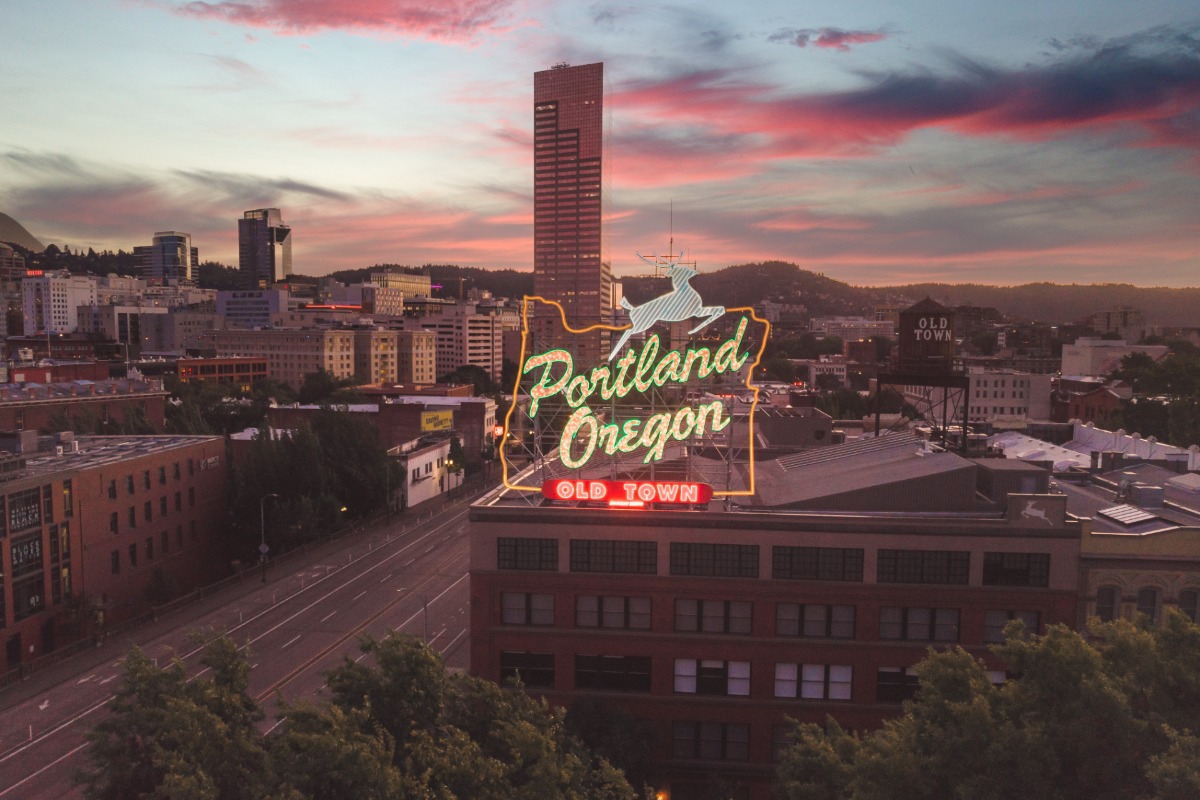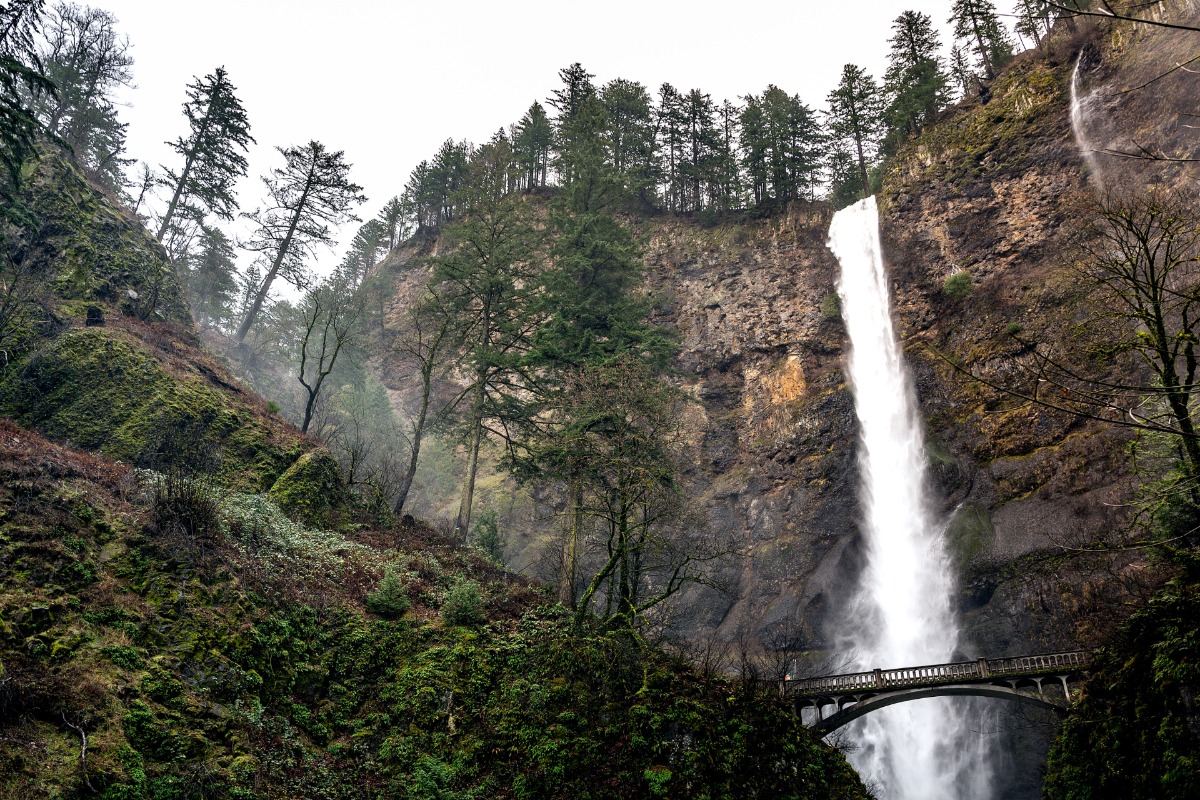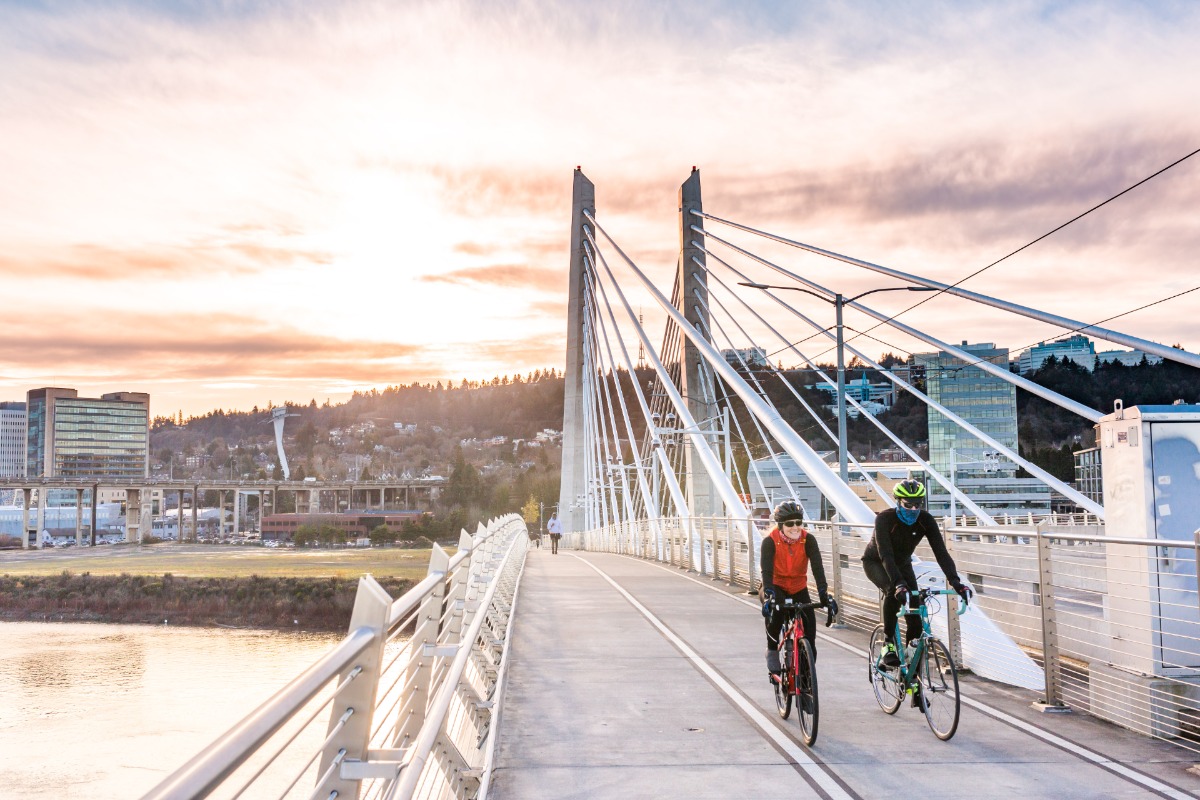Oregon, also known as the “Beaver State,” is located in the Pacific Northwest and is filled with lush greenery, sprawling coastlines, an amazing food scene, and a unique and vibrant culture. Home to just over 4.2 million people, there are many reasons why people choose to call this place home. Whether you’re looking to buy a house in Portland or just looking to rent an apartment in Eugene so you can see if it’s the right fit, you’ll be sure to find a place to settle down within the state. If you’re looking to relocate to the area, we broke down 10 Pros and Cons of Living in Oregon. Keep reading to see what made the list.

Pros of Living in Oregon
1. A supportive sports fanbase
While Oregon does not have a professional sports team in every league, there is a great sports atmosphere and a strong fan base present in its largest city, Portland. In the city, you will find the Portland Timbers (MLS), Portland Trailblazers (NBA), and Portland Thorns FC (NWSL). Many great athletes have played on local teams such as Damien Lillard, Darlington Nagbe, and Alex Morgan. While in Portland, catch a game at the Moda Center or Providence Park.
2. Delicious food and drink options
There is no denying that Oregon is home to a wonderful food and drink scene. Bend has the third most breweries per capita in the United States according to Food and Wine. Local favorites that you should check out include Bend Brewing Company, Sunriver Brewing Co., and Deschutes Brewery. Portland also has the best Pizza in America according to the Modernist Pizza featuring notable restaurants like Handsome Pizza, Sizzle Pie, and Apizza Scholls. If you’re looking to get a sample of different types of food, Portland has many food cart pods located in the North, Northeast, South, and Downtown areas.
Lastly, if you love dessert, Oregon is the place for you. Be sure to pick up Voodoo Donuts, Churros Locos, Pip’s Original Doughnuts & Chai, Sea Star Gelato, and Bontà Natural Artisan Gelato.
3. Access to pristine nature
Oregon is filled with beautiful coasts, lush forests, and tall mountains. Coastal cities like Pacific City, Cannon Beach, Astoria, Tillamook, and Seaside all get incredible views of the Pacific Ocean while Portland and surrounding suburbs like Sandy, Hood River, and The Dalles all get sights of Mount Hood on a clear day. In Bend, you can get a glimpse of Mount Bachelor and South Sister.
Oregon is also home to one national park, Crater Lake National Park, and several state parks including Cape Lookout State Park and Smith Rock State Park. If you love waterfalls, pay a visit to the Columbia River Gorge’s Waterfall Alley where you can visit 8 different waterfalls including Latourell Falls, Bridal Veil Falls, and Multnomah Falls.
There are also a lot of outdoor recreational activities residents can partake in. Skiing or Snowboarding at Mount Bachelor, Mount Hood Meadows, or Timberline Lodge & Ski Area; hiking trails like Dog Mountain, Painted Canyon, and Wildhorse Lake Trail; and mountain biking at Powell Butte Nature Park or Rocky Point are favorite activities amongst locals.

4. No sales tax
Oregon does not have sales tax so you won’t be taxed on any goods and services while shopping in the state.
5. Bike-friendly
The “Beaver State” is filled with many scenic roads, urban bike trails, and mountain bike tracks that you can explore. Some of the best routes you can check out include Kelly Point Park, Deschutes River Railbed Trail, Rim Drive at Crater Lake, Willamette Valley Scenic Bikeway, and the Historic River Highway State Trail.
Cons of Living in Oregon
6. Higher than average Median Home Sale Price
With a median home sale price of $486,500, purchasing a home in Oregon is more expensive compared to the rest of the US, which has an average of $389,520. However, there are some cities that have a lower median home sale price, such as Coos Bay at $325,250, Roseberg at $361,500, and The Dalles at $366,944. Make sure you calculate how much home you can afford before beginning your home search.
7. Traffic
While the eastern side of Oregon sees little traffic, the western side tends to see a lot, especially during rush hour. Portland can get busy heading towards surrounding suburbs as well as the stretch between Salem to Portland. In addition, the 1-5 corridor through Grants Pass gets packed during rush hour. Further south, Bend also sees its fair share of traffic during peak times.
8. You can’t pump your own gas
While this may be considered a pro for some people, not being able to pump your gas can lead to longer waiting times and potentially higher fees to cover the service charge. If you live in a smaller town with less than 40,000 you may be able to pump your own gas.

9. Weather
Weather tends to be mild in Oregon with all four seasons and snow in the mountains, which can be a plus for some people. However, if you live in the western part of the state, expect to see clouds and rain for the majority of the winter, fall, and spring months. If you are a person who needs sunshine, you should consider eastern Oregon, which experiences much more extremes and tends to be drier compared to western Oregon, especially in the southeast region.
10. High-income tax
Oregon has an income tax of 9.90%, however, the higher your income the more percentage of taxes you pay.
*Median home sale price data was pulled from the US Housing Market resource on March 8, 2022. State sales tax was pulled from World Population Review in March 2022. State income tax was pulled from Tax Foundation in March 2022.
The post 10 Pros and Cons of Living in Oregon appeared first on Redfin | Real Estate Tips for Home Buying, Selling & More.
